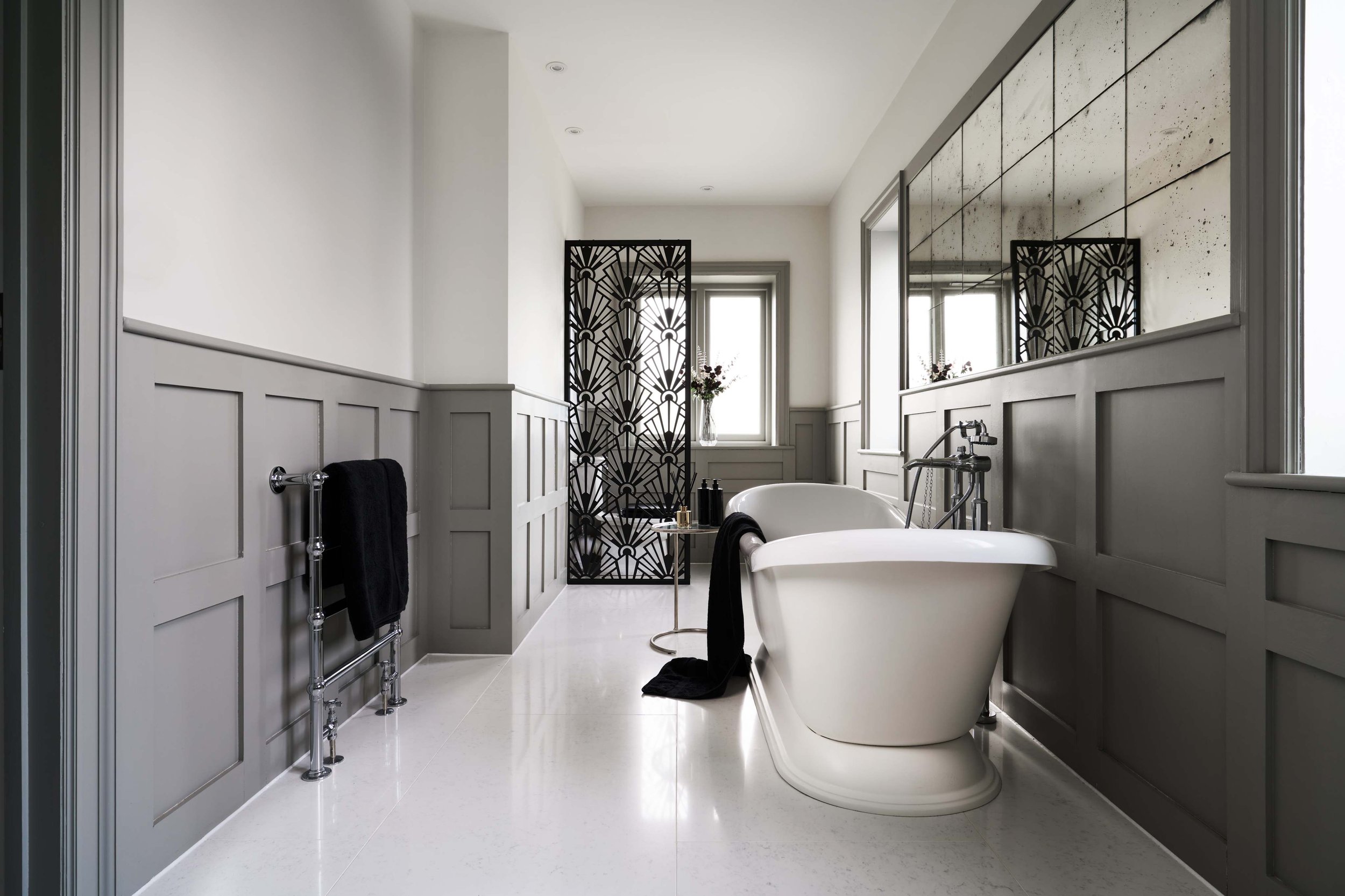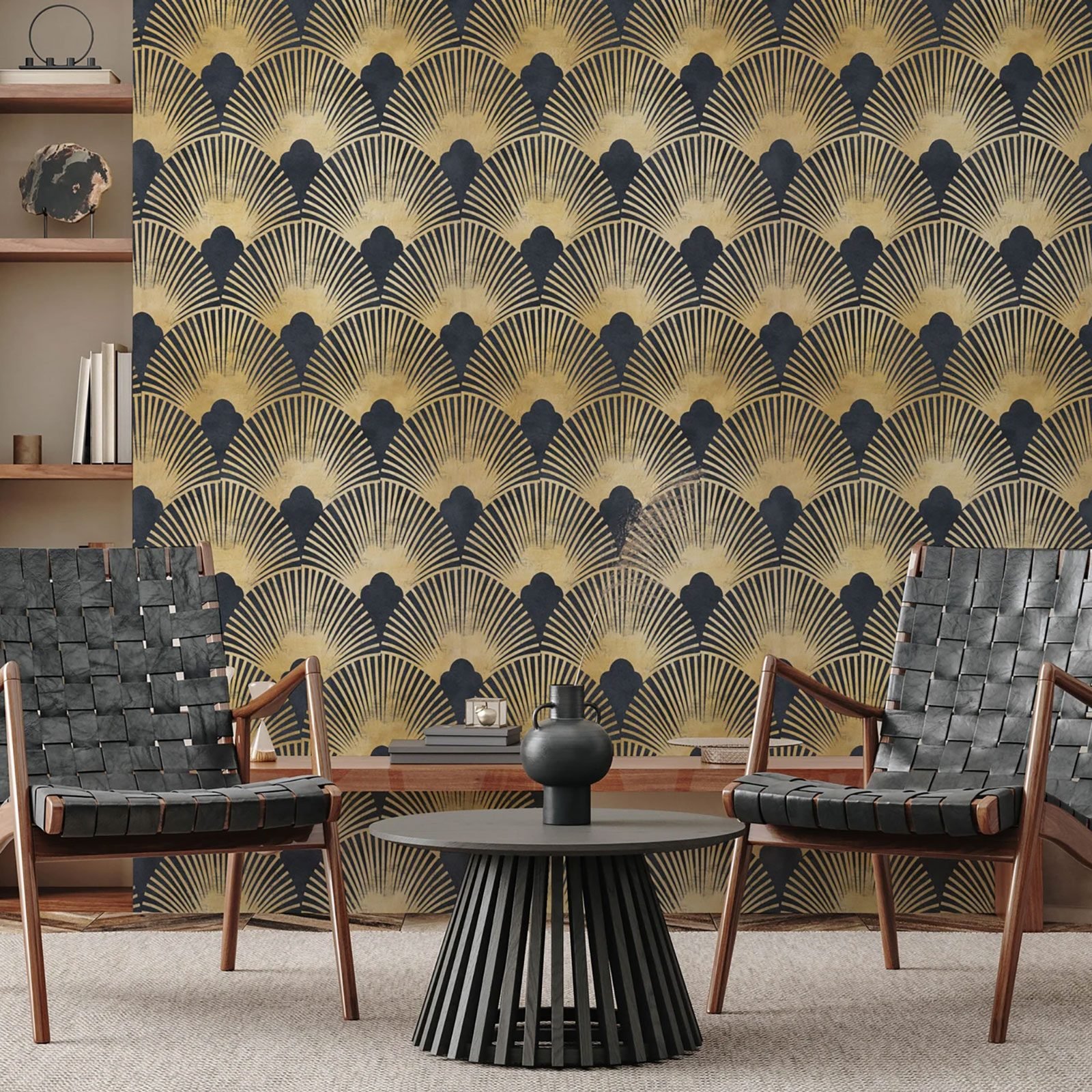The Art Deco Era and its Influence on Furniture Design: Antique Art Deco China Cabinet

The Art Deco movement, a major design force in the 1920s and 1930s, left an enduring mark on furniture design, shaping the aesthetic of homes and public spaces for generations to come. This style, born from a confluence of artistic and social trends, embraced geometric forms, luxurious materials, and a celebration of modernity, setting a new standard for elegance and sophistication.
The Historical Context of the Art Deco Movement
The Art Deco movement emerged in the aftermath of World War I, a time of profound societal and cultural shifts. The war’s devastation, coupled with the burgeoning industrial revolution, fostered a desire for a new era of optimism and progress. Art Deco reflected this spirit, embracing a bold and optimistic vision of the future.
Key Design Principles of Art Deco Furniture
Art Deco furniture design was characterized by a distinct set of principles that emphasized geometric forms, luxurious materials, and a celebration of modernity.
- Geometric Forms: Art Deco furniture frequently featured geometric shapes such as circles, squares, triangles, and zigzags, often arranged in symmetrical patterns. This emphasis on geometric forms created a sense of order and structure, reflecting the era’s fascination with technology and progress.
- Luxurious Materials: Art Deco furniture makers favored high-quality materials such as exotic woods, polished metals, and rich fabrics. These materials, often combined in elaborate designs, created a sense of opulence and luxury, reflecting the economic prosperity of the era.
- Modernity and Functionality: Art Deco furniture was designed to be both stylish and functional, reflecting the growing emphasis on modern living. This emphasis on functionality was evident in the furniture’s clean lines, streamlined shapes, and ergonomic design.
Famous Art Deco Furniture Designers and Their Contributions
The Art Deco era produced a number of talented furniture designers who helped shape the movement’s aesthetic.
- Eileen Gray: A prominent Irish architect and furniture designer, Eileen Gray was known for her innovative use of materials and her minimalist designs. Her iconic “Bibendum” armchair, with its distinctive curved form and luxurious upholstery, exemplifies her mastery of form and function.
- Jean-Michel Frank: A French designer renowned for his elegant and refined style, Jean-Michel Frank embraced simplicity and functionality. He often incorporated materials such as leather, lacquer, and chrome into his designs, creating furniture that was both luxurious and understated.
- Rulmann Bros.: This American furniture firm was known for its luxurious and highly ornate designs. The Rulmann Bros. created furniture for some of the most prominent figures of the era, including the Vanderbilts and the Astors. Their furniture was often characterized by intricate carvings, exotic woods, and luxurious finishes.
Comparison of Art Deco Furniture Styles with Other Popular Styles of the Era
Art Deco furniture, with its bold geometric forms and luxurious materials, stood in contrast to other popular styles of the era.
- Art Nouveau: Art Nouveau, with its emphasis on flowing lines and organic forms, was a predecessor to Art Deco. While Art Nouveau embraced natural motifs and sinuous curves, Art Deco favored geometric shapes and bold patterns.
- Modernism: Modernism, a design movement that emerged in the early 20th century, shared some similarities with Art Deco, such as an emphasis on functionality and clean lines. However, Modernism tended to be more minimalist and austere than Art Deco, often using less elaborate materials and ornamentation.
The Significance of China Cabinets in Art Deco Design

China cabinets were a staple in Art Deco homes, serving both functional and aesthetic purposes. They provided a dedicated space for showcasing prized china and glassware, reflecting the owners’ taste and social status. Beyond practicality, these cabinets became artistic expressions, embodying the era’s design principles.
Materials and Techniques Used in Crafting Art Deco China Cabinets
Art Deco china cabinets were crafted using a variety of materials, reflecting the era’s fascination with both traditional craftsmanship and modern innovations.
- Wood: Walnut, mahogany, and oak were popular choices, often combined with exotic veneers like macassar ebony or rosewood for dramatic contrast.
- Metal: Chrome, nickel, and brass were incorporated for decorative accents, handles, and structural elements, adding a touch of modernity.
- Glass: Clear, frosted, or colored glass panels were used for doors and shelves, allowing for the display of delicate china while maintaining a sense of openness.
The techniques employed were equally diverse, showcasing the artisans’ skill and attention to detail.
- Intricate Carving: Geometric patterns, stylized floral motifs, and abstract designs were meticulously carved into the wood, adding depth and texture.
- Lacquer: Black or colored lacquer was applied to create a smooth, high-gloss finish, enhancing the cabinet’s elegance and highlighting its geometric forms.
- Marquetry: Intricate patterns were created by inlaying pieces of wood of different colors and textures, creating a visually stunning effect.
Distinctive Features of Art Deco China Cabinet Design, Antique art deco china cabinet
Art Deco china cabinets were characterized by their bold geometric shapes, symmetrical designs, and use of luxurious materials.
- Geometric Patterns: Rectangles, squares, circles, and zigzags were prevalent, creating a sense of order and sophistication. The cabinets often featured stepped or tiered shelves, adding visual interest and highlighting the displayed objects.
- Stylized Floral Motifs: Art Deco designers reinterpreted traditional floral designs, simplifying them into geometric forms and incorporating them into the cabinet’s overall design. These motifs often featured stylized leaves, buds, and blossoms, adding a touch of organic beauty to the geometric forms.
- Exotic Materials: The use of exotic woods, such as macassar ebony, rosewood, and zebrawood, added a sense of luxury and sophistication to the cabinets. These materials were often combined with metal accents, creating a striking contrast between natural and industrial elements.
Comparison of Different Styles of Art Deco China Cabinets
| Style | Materials | Ornamentation | Common Design Elements |
|---|---|---|---|
| Geometric | Walnut, mahogany, chrome, glass | Geometric patterns, stepped shelves | Rectangular or square shape, symmetrical design, clear glass panels |
| Floral | Mahogany, rosewood, nickel, glass | Stylized floral motifs, carved details | Curved lines, flowing forms, frosted glass panels |
| Exotic | Macassar ebony, zebrawood, brass, glass | Intricate marquetry, lacquer finish | Bold shapes, asymmetrical design, colored glass panels |
The Value and Collectibility of Antique Art Deco China Cabinets

Antique Art Deco china cabinets are highly sought-after by collectors and enthusiasts for their exquisite craftsmanship, unique design elements, and historical significance. These cabinets represent a pivotal moment in furniture design, blending functionality with artistic expression. Understanding the factors that influence their value can help collectors make informed decisions and appreciate their investment.
Factors Influencing Value
The value of an antique Art Deco china cabinet is determined by several factors, including its maker, materials, condition, and rarity.
- Maker: The reputation of the maker significantly influences the cabinet’s value. Renowned designers and manufacturers like Emile-Jacques Ruhlmann, Jacques-Emile Ruhlmann, and Jean Dunand are highly sought after by collectors, commanding premium prices for their pieces.
- Materials: The materials used in the construction of the cabinet also play a crucial role. Cabinets made from exotic woods like rosewood, ebony, and mahogany are generally more valuable than those made from more common materials. Inlays, veneers, and decorative elements like metalwork, glass, and ivory further enhance the cabinet’s value.
- Condition: The condition of the cabinet is a critical factor in determining its value. Cabinets in excellent condition, free from damage or wear, are more desirable and command higher prices. Restoration work, while sometimes necessary, can affect the cabinet’s value, particularly if not carried out by a skilled professional.
- Rarity: Rare and unique pieces, those produced in limited quantities or with distinctive design features, are highly sought after by collectors. The scarcity of these pieces often drives their value significantly higher.
Prominent Antique Dealers and Auction Houses
Several prominent antique dealers and auction houses specialize in Art Deco furniture, offering a wide selection of china cabinets and other pieces from the era.
- Sotheby’s: A global leader in the auction of fine art and collectibles, Sotheby’s offers a wide range of Art Deco furniture, including china cabinets, at its auctions and galleries worldwide.
- Christie’s: Another prominent auction house, Christie’s hosts regular auctions of Art Deco furniture, attracting collectors and enthusiasts from around the globe. Their expertise in the field ensures authenticity and accurate valuation of the pieces.
- Phillips: Phillips, a renowned auction house, specializes in 20th-century design and offers a curated selection of Art Deco furniture, including china cabinets, at its auctions and online platforms.
- Galerie Jacques Lacoste: A leading specialist in Art Deco furniture, Galerie Jacques Lacoste in Paris, France, offers a curated collection of high-quality pieces, including china cabinets, by prominent designers and manufacturers.
- Newel: A reputable antique dealer based in New York City, Newel offers a wide range of antique furniture, including Art Deco china cabinets, with a focus on authenticity and historical significance.
Current Market Trends
The market for antique Art Deco china cabinets is dynamic and influenced by several factors, including economic conditions, collector preferences, and the availability of pieces.
- Increased Demand: The growing appreciation for Art Deco design has led to increased demand for antique china cabinets, particularly those by renowned makers and in excellent condition. This demand has contributed to a steady rise in prices for high-quality pieces.
- Focus on Authenticity: Collectors are increasingly focused on authenticity and provenance, seeking pieces with verifiable histories and documentation. This trend has led to higher prices for cabinets with original labels, maker’s marks, and documented provenance.
- Rarity and Uniqueness: Rare and unique pieces, those produced in limited quantities or with distinctive design features, are highly sought after by collectors. The scarcity of these pieces often drives their value significantly higher.
Estimated Market Value
The following table provides a general overview of estimated market values for different types of Art Deco china cabinets, based on factors like maker, materials, and condition:
| Type of China Cabinet | Estimated Market Value |
|---|---|
| Emile-Jacques Ruhlmann cabinet in rosewood with ivory inlay | $50,000 – $250,000+ |
| Jacques-Emile Ruhlmann cabinet in ebony with metal accents | $30,000 – $150,000+ |
| Jean Dunand cabinet in lacquered wood with geometric patterns | $20,000 – $100,000+ |
| American Art Deco cabinet in mahogany with glass panels | $5,000 – $25,000+ |
| French Art Deco cabinet in oak with marquetry | $10,000 – $50,000+ |
It’s important to note that these are just estimates and the actual value of an antique Art Deco china cabinet can vary depending on its specific characteristics and the current market conditions.
An antique Art Deco china cabinet, with its intricate details and elegant lines, is a timeless treasure. It’s a reminder of a bygone era, when craftsmanship was revered and every piece was made to last. Today, we can find similar aesthetics in modern designs, such as wall mounted storage cabinets with glass doors , which offer a sleek and functional way to showcase our treasured belongings.
While the antique cabinet might be a statement piece, the modern option provides practicality and a touch of sophistication to any space.
An antique Art Deco china cabinet, with its sleek lines and geometric patterns, is a true testament to the elegance of a bygone era. To truly capture the essence of this style, consider enhancing its beauty with reproduction antique cabinet hardware.
These meticulously crafted pieces can breathe new life into your cabinet, restoring its original charm and allowing it to stand as a captivating centerpiece in your home.
